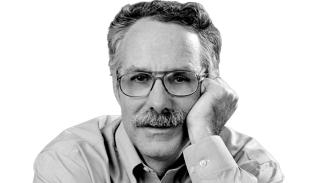
[OP-ED]: Is the American Dream killing us?
MORE IN THIS SECTION
The results were startling because longer life expectancies have been a reliable indicator of improvement in the human condition. In 1940, U.S. life expectancy at birth was 63 years; by 2010, it was 79 years. The gains reflect medical advances (drugs, less invasive surgery), healthier lifestyles (less smoking) and safer jobs (less physically grueling factory work). These trends were expected to continue.
But, in a new paper, Case and Deaton confirm and extend their findings. In the new century, mortality -- that is, dying -- has increased among middle-aged non-Hispanic whites, mainly those with a high-school diploma or less. By contrast, life expectancy is still improving among men and women with a college degree. It’s also increasing among blacks and Hispanics, whose mortality rates have traditionally exceeded whites’.
The conclusions largely corroborate the work of conservative scholar Charles Murray. In a 2012 book -- “Coming Apart: The State of White America 1960-2010” -- he argued that the country was splintering along class lines as well as race and ethnic lines. Like Case and Deaton, he focused on people without a college degree. Some political analysts have attributed Donald Trump’s victory to support from this angry group.
The main causes of rising death rates among non-Hispanic whites 50 to 54, men and women, are so-called “deaths of despair” -- suicides, drug overdoses and the consequences of heavy drinking. Since 1990, the death rate from these causes for this group has roughly doubled to 80 per 100,000. These deaths offset mortality gains among children and the elderly, leading to a fall in overall U.S. life expectancy in 2015, Case and Deaton say.
One theory attributes the spike in “deaths of despair” to growing income inequality. There would be fewer suicides, drug overdoses and alcohol-related deaths if incomes were distributed more equally, the argument goes. People take out their frustrations and anger by resorting to self-destructive behavior.
Although this sounds plausible, Case and Deaton are skeptical. They don’t discount it entirely but think the argument is oversold. They point out that, in many places and among many populations, growing income inequality has not increased death rates. For example, American blacks and Hispanics are living longer despite growing economic inequality. In Europe, slow economic growth and more inequality have not led to higher death rates.
RELATED CONTENT
Instead, Case and Deaton advance a tentative theory -- they emphasize “tentative” -- that they call “cumulative deprivation.” The central problem is a “steady deterioration in job opportunities for people with low education.”
One setback leads to another. Poor skills result in poor jobs with low pay and spotty security. Workers with lousy jobs are poor marriage candidates; marriage rates decline. Cohabitation thrives, but these relationships often break down. “As a result,” write Case and Deaton, “more men lose regular contact with their children, which is bad for them and bad for the children.”
To Case and Deaton, these “slow-acting and cumulative social forces” seem the best explanation for the rise in death rates. Because the causes are so deep-seated, they will (at best) “take many years to reverse.” But even if their theory survives scholarly scrutiny, it’s incomplete. It misses the peculiarly American aspect of this story.
American culture emphasizes striving for and achieving economic success. In practice, realizing the American Dream is the standard of success, vague though it is. It surely includes home ownership, modest financial and job security and a bright outlook for our children. When striving accomplishes these goals, it strengthens a sense of accomplishment and self-worth.
But when the striving falters and fails -- when the American Dream becomes unattainable -- it’s a judgment on our lives. By our late 40s or 50s,
the reckoning is on us. It’s harder to do then what we might have done earlier. We become hostage to unrealized hopes. More Americans are now in this precarious position. Our obsession with The American Dream measures our ambition -- and anger.







LEAVE A COMMENT:
Join the discussion! Leave a comment.